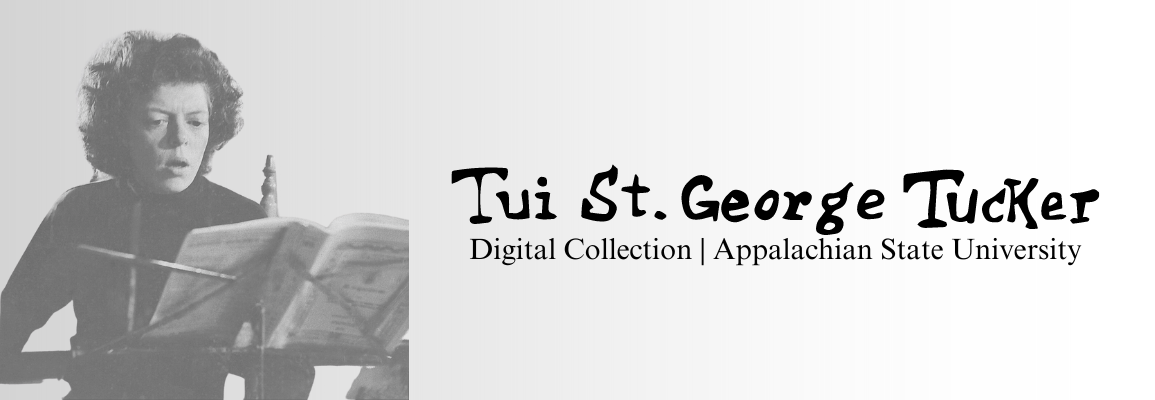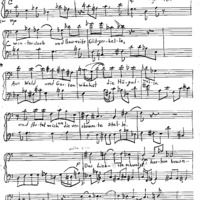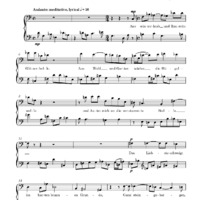Dezember and Neujahr
for tenor and viola
American Erika Weigand (1916-46), the young woman who would eventually introduce Vera to Tui, was a student of Vera Lachmann’s while she was in Germany with her parents, German Studies scholar Hermann Weigand and his wife Frances.1 Erika and Vera developed a very close friendship, and in 1939, Erika and her parents, helped convince Vera to leave Germany.2 Letters from Erika’s parents along with Vassar’s president H. N. MacCracken and the dean at Radcliffe (where Erika had studied ) helped convince Eleanor Roosevelt to intercede with the State Department, who had denied Vera’s ex-quota visa because she had not been teaching at an official university. Vera was granted a visa on November 16, 1939.3
One of the several teaching positions Vera took on in her first years in the US was at Salem College in Winston-Salem, North Carolina in 1943. At that time, Weigand was working on a master’s degree in Art History at UNC-Chapel Hill, a new degree at this institution developed and directed by another German-Jewish immigrant, Clemens Sommer. Through Weigand, Lachmann got to know Sommer and his wife Elizabeth. Finding that they had much in common, Lachmann and Elizabeth Sommer began to pursue finding land on which to establish a summer camp.
When Tui arrived in NYC in 1945, she eventually got to know Erika. After finishing her master’s in art history at the University of North Carolina at Chapel Hill, Erika had moved to New York and started a Ph.D. at the Institute of Fine Arts. One of Tui’s roommates was in the same program. Lachmann reveals that Erika was embroiled in figuring out her role in life during this time and experienced a Dionysian period that included elaborate parties when she moved to New York. It would not be a far leap to imagine that Tui first met Erika at one of those parties, and, according to Vera’s article, Erika fell in love with Tui. Vera quotes Tui describing Erika as someone with nothing but promise and an enormous amount of energy “. . . big enough to build a city or write a book with 24 volumes.”
Erika was a very sensitive woman who had long been concerned about her own physical and psychological health. Erika’s already fragile state of mind combined with learning about the deaths of close friends in Nazi concentration camps and dealing with an unexpected passion for Tucker exacerbated her mental state. Weigand spurned professional psychoanalytic treatment and attempted self-analysis by studying Freud on her own. Not finding the psychological relief she needed, Weigand threw herself from the twelfth floor of an office building at 9 East Forty-Sixth street in Manhattan at the beginning of May 1946. Leaving a note, Erika claimed, “This is all I can do to remain myself. Bitte seht, dass es recht war.” It is unclear if Tui returned Erika’s passion and Erika could not abide this relationship or if Tui and Vera were together at this time, causing Erika to feel rejected by both of them. Regardless, Tui and Vera turned to each other and bonded over shared grief.
1. Clifford Wilcox, “World War I and the Attack on Professors of German at the University of Michigan,”History of Education Quarterly (33/1, 1993): 59, 68↩
2. Miller, Catawba Assembly, 8.↩
3. Cook, Eleanor Roosevelt, 222-223.↩


